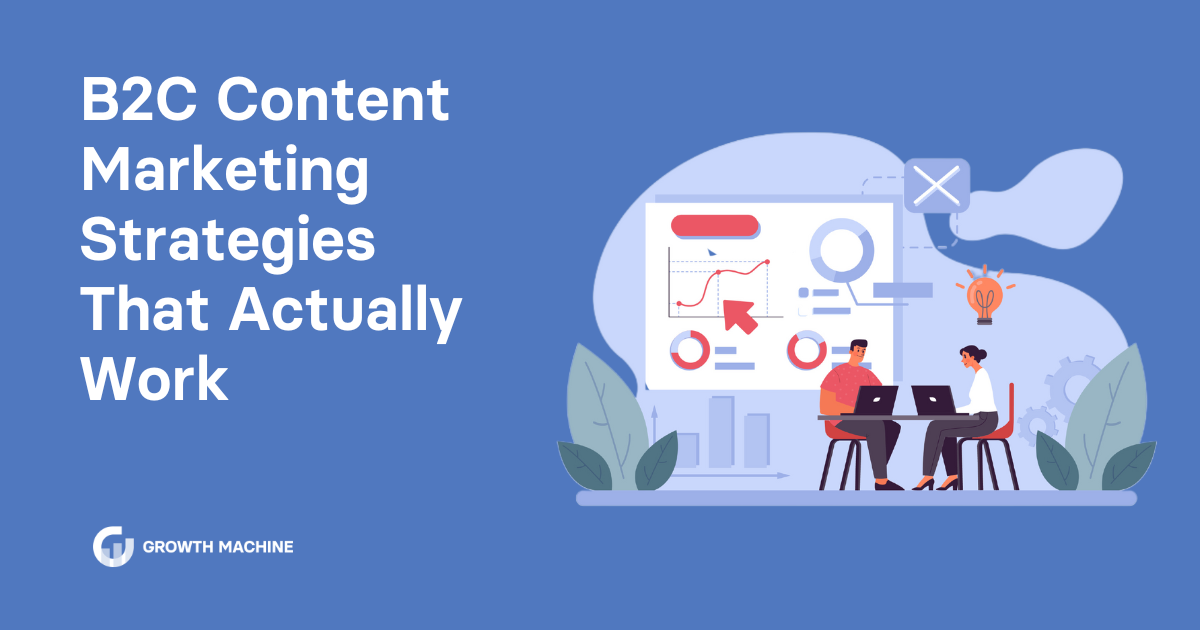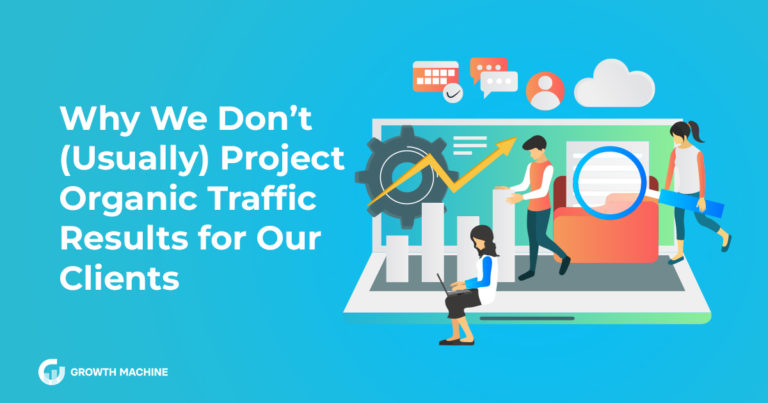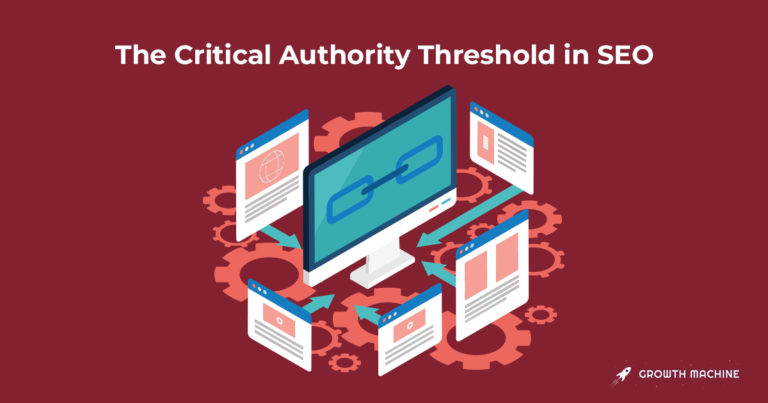The New Rules for B2C Content Marketing (and Data Is a Must)
There’s a lot of marketing advice out there, but not all of it applies to business-to-consumer (B2C) models like yours, whether you’re the owner of a growing e-commerce clothing business or a brick-and-mortar pet supply shop. After all, it’s a whole different game: Shoppers definitely aren’t going to be finding you through LinkedIn or industry magazines.
B2C content marketing is evolving faster than ever. Consumers are bombarded with endless social media posts, ads, and videos every day, so how can your brand stand out? The key lies in building a content marketing strategy that’s designed for maximum engagement.
In this guide, we’ll explain how B2C marketing differs from its sibling, business-to-business (B2B) marketing, and how you can use B2C content marketing to get ahead in even the most competitive spaces.
4 Big Differences Between B2B and B2C Content Marketing
B2C content marketing is very different from B2B content marketing. B2B strategies focus on targeting decision-makers who buy on a slow schedule and need lots of supporting data before they spend a dime. B2C, on the other hand, thrives on emotion, engagement, and quick decision-making.
The internet is full of advice tailored to B2B companies, but not necessarily to B2C folks. Following the wrong content strategy could lead to wasted time and effort — and you certainly can’t afford to waste resources as a growing business.
Let’s break down the key differences between B2B versus B2C content marketing, and it’ll become evident why a unique content marketing strategy is so crucial.
- Emotional content is king: B2C content should connect with individual consumers on a more emotional level since there are fewer walls between you and your shoppers. There’s no need to put together a data fact sheet or white paper; B2C content marketing relies on experiences and interaction to trigger emotions.
- Story-first content rules the day: A compelling story sticks with your potential customers far longer than a list of product specs. Successful B2C brands craft narratives that build relationships and evoke emotions, whether through heartfelt testimonials, funny TikToks, or aspirational brand messaging.
- Multimedia leads the way: B2B content marketing is often pretty text-heavy, but everyday shoppers don’t have time to read a long email. B2C content is all about interactive media, like video content and engaging images. Invest in “snackable” multimedia content on social media and other platforms to boost website traffic.
- Personalization is a must: This is actually a best practice for both B2B and B2C companies, but the way you implement it will differ. For B2C, personalize content based on shoppers’ buying histories, demographics, and other characteristics to offer curated experiences that keep your customers engaged.
Overall, the biggest difference is that B2C gives you the license to be big, bold, and emotional. B2C shoppers buy based on their feelings and their immediate needs, and also are attracted by trending products.
As a result, B2C marketing appeals tend to be more personal and story-based, which require more out-of-the-box thinking and imaginative content than for B2B.
5 Rules for B2C Content Marketing in 2025
It’s 2025, and your consumers expect high-quality content. That’s well and good, but how exactly can a business create great B2C campaigns — especially in an era of crammed email inboxes and overloaded social media feeds?
To succeed, B2C brands need to refine their content marketing strategy, leverage data-driven insights, and prioritize the customer experience like never before. Follow these B2C digital marketing best practices to stand out for all the right reasons.
1. Build a Dedicated B2C-Focused Content Marketing Strategy
Do you have a documented strategy for content marketing for B2C? If not, now’s the time to make one and write it down. Content strategy has a lot of moving parts, but you need to create a plan for:
- Reaching your target audience: To find your target shoppers, define your target buyer personas. Understand your shoppers’ ages, interests, online behavior, and pain points. A little upfront research will help you write content that feels more personalized and fosters customer loyalty in the long run.
- Writing content that moves people: You want people to watch or read your content, but that’s just step one. Ultimately, your content should support lead generation. Every piece of content should end with a call to action (CTA), whether that’s to buy a product or read one of your blog posts to learn more.
- Content formats: Your customers regularly engage with different types of content, so one format won’t cut it, especially for B2C. Your B2C marketing strategy should plan content for various formats, including video content, infographics, podcasts, and social media posts.
- Covering the SEO basics: Search engine optimization (SEO) is a biggie for both B2B and B2C content marketing. Invest in keyword research to help your brand’s website rank on search engines, which will attract more organic traffic to your site. Take a Wiki-based approach to target multiple high-quality keywords tailored to your target audience’s biggest needs.
2. Nail Your Distribution Platforms
You put in a lot of work to create awesome content. But quality content alone isn’t enough to boost B2C sales — you also need to get your content in front of the right audience. B2C brands need to focus on social media and email marketing to engage individual consumers, increase brand awareness, and ultimately drive sales.
With billions of active users, platforms like TikTok, Instagram, and YouTube are great spaces for sharing video content, interactive stories, and engaging social media posts. To maximize reach:
- Share infographics and short-form video content to grab attention quickly.
- Create trend-driven marketing campaigns that will spark conversations.
- Work with influencers to expand your reach and boost brand awareness.
- Maintain a consistent posting schedule to stay top-of-mind with potential customers.
- Offer exclusive content, discounts, or early product access.
- Use automation to send tailored content at the right time.
For example, Gen Z darling makeup brand Glossier is a master of content distribution. It posts short-form videos on Instagram, YouTube, and TikTok sharing user-generated content, product tutorials, and behind-the-scenes content to stay continually connected to shoppers.
3. Decide With Data, Not Your Gut
A B2C content marketing strategy will keep you on the straight and narrow, but only if you follow the data. Don’t make changes to your products, website, social posts, or landing pages without data to back it up. Brands that rely on analytics instead of intuition see higher conversions, stronger brand awareness, and more effective content marketing efforts.
For starters, track your content performance using Google Analytics, HubSpot, or another marketing analytics tool. Monitor metrics like:
- Conversions
- Engagement rates
- Organic versus paid traffic
- Total website traffic
- Web traffic referral sources, like search engines or social media
Over time, you’ll learn which topics, keywords, content formats, and CTAs speak to your audience. Instead of clinging to the old ways of doing things, stay flexible and let the data guide you.
4. Go Multimedia-First
Text-heavy content takes the backseat in B2C content marketing. B2C is all about video content, social media posts, and podcasts. Platforms like TikTok, YouTube Shorts, and Instagram Reels have made short-form video content a must-have for any B2C company.
Get more eyeballs on your content by leveraging influencer partnerships on these platforms. For example, fitness brand Gymshark collaborates with TikTok influencers to create engaging, relatable content that puts its brand in front of millions of people.
5. Create Valuable Content (Without Losing Your Mind)
B2C content marketing might sound like a lot of work, but we have a trick up our sleeves for creating a lot of content in record time. There’s no need to reinvent the wheel; just repurpose content across platforms in different formats.
For example, you can easily convert a customer testimonial into an e-commerce ad with just a few clicks (and the customer’s permission, of course).
Film a single 10-minute YouTube video, and you can quickly generate:
- A podcast by isolating the video’s audio
- A blog by transcribing the audio
- Social posts based on blog blurbs
- Graphics from social media snippets
Remember: You don’t have to think of something new to say every time you post. Your shoppers are spread across multiple platforms anyway. This approach will help you generate an impressive amount of B2C content marketing that reaches your shoppers across all platforms — without filming hours of new content every week.
Build a Content Creation Assembly Line
The B2C space can get super competitive, but a strong content marketing plan will help you stand out. Don’t stick to advice tailored to consulting firms, accountants, and other B2B companies — follow a unique plan designed to attract the attention and loyalty of your B2C shoppers.
And because B2C brands need to ship lots of orders to be profitable, you also need lots of customers — and so you should be seeing lots of traffic on your social media and lots of engagement with your content marketing campaigns. The tips in this guide are a great starting point if you need a B2C content marketing plan.
For many companies, though, there’s just one little problem: Chances are, you don’t have 10 hours a week to devote to content marketing. You’ve got a business to run, after all.
That’s where we come in. Growing B2C companies tap Growth Machine to build customer personas, conduct keyword research, and create eye-catching content that gets results. Contact us today to reap the benefits of powerful B2C content marketing with zero hassle.







